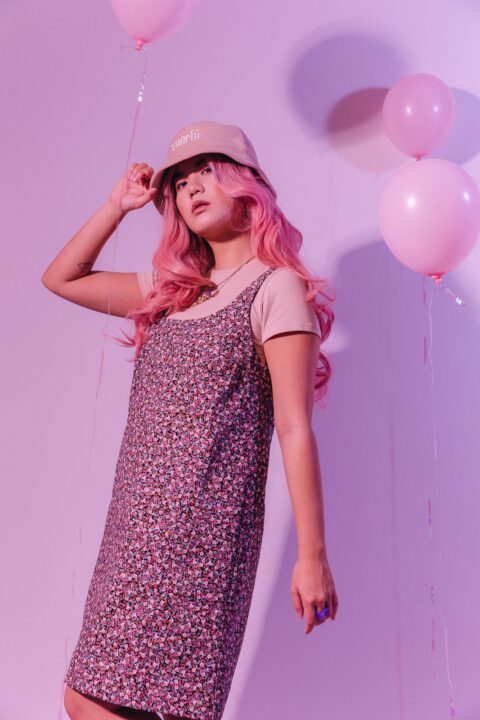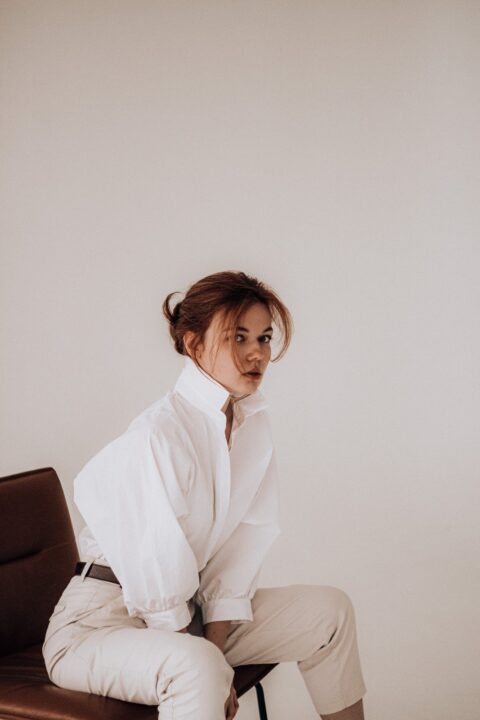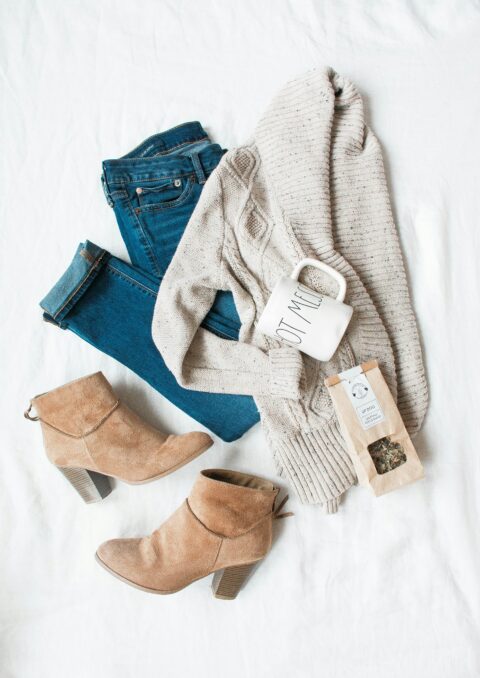Unlocking the secrets of impeccable style can often feel like cracking a code. How do some people effortlessly put together outfits that are both trendy and timeless? The answer lies in one powerful tool: style guides. These little-known gems hold the key to understanding fashion’s language, allowing you to decode your personal style and elevate your wardrobe game. In this article, we will unravel the mysteries behind style guides and show you how they can transform your fashion sense from ordinary to extraordinary! So get ready to immerse yourself in the essential guide to style guides – it’s time to unlock your true fashion potential!
The Importance of Style Guides in the Fashion Industry
In the fast-paced world of fashion, staying ahead of the trends is an absolute must. But how do designers and brands maintain consistency in their collections? This is where style guides come into play.
Style guides serve as a blueprint for fashion houses, dictating everything from color palettes to typography choices. They ensure that every aspect of a brand’s visual identity aligns seamlessly, creating a cohesive and recognisable image.
But style guides aren’t just for big-name designers – they are equally important for individuals looking to refine their personal style. By creating your own style guide, you can define your aesthetic preferences, experiment with different looks, and curate a wardrobe that truly reflects who you are.
Furthermore, style guides empower us to make informed choices when it comes to shopping. Instead of being overwhelmed by endless options or falling victim to fickle trends, we can refer back to our personal guidelines and confidently select pieces that fit within our established framework.
Embracing the power of style guides allows us to navigate the vast sea of fashion with purpose and confidence. Whether you’re in the industry or simply passionate about expressing yourself through clothing choices, incorporating this invaluable tool into your repertoire will undoubtedly elevate your fashion game!
What is a Style Guide?
What is a Style Guide?
A style guide, in the context of fashion, serves as a comprehensive reference for creating and maintaining consistent visual and aesthetic elements. It acts as a blueprint that outlines rules and guidelines to ensure cohesion across various mediums. From clothing brands to fashion magazines, style guides are essential tools used by industry professionals.
In essence, a style guide establishes the brand’s identity by defining its unique attributes such as color palettes, typography choices, logo usage guidelines, and even photography styles. These guidelines help maintain consistency in branding efforts both online and offline.
For fashion editorial publications or blogs, style guides provide direction on how to present content visually through layouts, font choices, image treatments,and even writing tone. This ensures that every piece of content adheres to the publication’s distinct voice while presenting information in an appealing manner.
Even celebrities utilize personal style guides to curate their signature looks. These guides may outline preferred fabrics or silhouettes along with specific styling tips tailored specifically for them.
Overall,a well-crafted style guide plays a crucial role in establishing and promoting brand identities within the dynamic world of fashion.
It helps streamline creative processes,promotes consistency,and enables brands,magazines,and individuals alike to stand out amidst ever-changing trends
Different Types of Style Guides (Brand, Editorial, Celebrity)
Different Types of Style Guides (Brand, Editorial, Celebrity)
Style guides are not a one-size-fits-all solution. They come in different variations to cater to the specific needs and objectives of various fashion industry players. Let’s explore the three main types of style guides commonly used: brand, editorial, and celebrity.
A brand style guide focuses on establishing a cohesive visual identity for a fashion brand. It outlines guidelines for logo usage, color palettes, typography choices, and overall design elements that reflect the essence of the brand. By following these guidelines consistently across all platforms and materials, brands can create a recognizable and memorable image in their consumers’ minds.
On the other hand, an editorial style guide is more focused on maintaining consistency in written content. It provides rules for grammar usage, spelling preferences, punctuation styles as well as tone and voice guidelines. This type of style guide ensures that all written communication from blog posts to social media captions aligns with the brand’s desired personality.
Lastly but certainly not least important is the celebrity style guide. As influencers become increasingly powerful in shaping trends and consumer behavior within the fashion industry today; having a consistent personal style becomes crucial for celebrities. A celebrity-style-guide helps them maintain their image by providing guidance on clothing choices that align with their persona while also considering current fashion trends.
In conclusion
Having an understanding of these different types of style guides allows us to appreciate how they serve distinct purposes within the fashion world. Whether it’s creating unity in branding efforts or ensuring consistency in written content or personal styling choices; incorporating these principles into our own approach can help elevate our sense of fashion presence! So why not take inspiration from this diverse range of resources available? The possibilities are endless when it comes to expressing your unique sense of style!
How to Create a Personal Style Guide
Creating a personal style guide is an essential step in developing your unique fashion sense. By defining your own style, you can confidently express yourself through your clothing choices and always look put-together. But how exactly do you go about creating a personal style guide? Let’s break it down.
First, take some time to reflect on what styles and aesthetics resonate with you the most. Look for inspiration from fashion magazines, social media influencers, or even just people-watching in your everyday life. Pay attention to the colors, patterns, and silhouettes that catch your eye.
Next, start compiling images of outfits or pieces that embody your desired style. This could be done through Pinterest boards or by creating a physical mood board using cutouts from magazines. Having visual references will help solidify the aesthetic you are aiming for.
Once you have collected enough inspiration, begin analyzing common themes and elements among the images. Are there certain colors or prints that consistently appear? Do you tend to gravitate towards more tailored or relaxed silhouettes? Identifying these patterns will give insight into key components of your personal style.
As you continue refining your guide, consider incorporating practical aspects such as body type and lifestyle preferences. Certain cuts may flatter specific body shapes better while considering comfort and functionality is crucial for those leading active lifestyles.
Don’t forget to experiment! Personal style is not static; it evolves over time as we discover new trends and grow as individuals. Allow room for experimentation in your wardrobe while staying true to the core elements outlined in your style guide.
Creating a personal style guide takes time and effort but pays off in helping define who we are through our fashion choices.”
Tips for Using Style Guides to Improve Your Fashion Sense
Tips for Using Style Guides to Improve Your Fashion Sense
1. Experiment with different combinations
When using a style guide, don’t be afraid to mix and match different pieces from your wardrobe. Try pairing unexpected colors or patterns together to create unique and eye-catching outfits. By experimenting with different combinations, you can discover new ways to express your personal style.
2. Pay attention to proportions
One key aspect of fashion is understanding how different garments work together in terms of proportion. Use your style guide as a reference for creating well-balanced outfits that highlight your best features. For example, if you’re wearing a voluminous top, balance it out with slim-fitting bottoms.
3. Use accessories strategically
Accessories can make or break an outfit, so use them strategically when following a style guide. Consider the overall vibe you want to achieve and choose accessories that complement it well. Whether it’s a statement necklace, bold sunglasses, or a colorful scarf – the right accessory can elevate any look.
4. Tailor clothes to fit perfectly
Even the most stylish outfit won’t look its best if it doesn’t fit properly. Take cues from your favorite brand’s style guide on how clothes should ideally fit and consider getting items tailored if necessary. A well-fitted garment not only enhances your appearance but also boosts confidence.
5. Stay true to yourself
While style guides provide inspiration and guidance, remember that ultimately fashion is about expressing yourself authentically! Don’t feel compelled to follow every trend or guideline religiously; instead, adapt them in a way that aligns with your own personal taste and comfort level.
6.
Stay updated with current trends
Fashion is always evolving so staying up-to-date with the latest trends is essential when utilizing style guides . Follow fashion influencers on social media platforms , read magazines , visit online blogs dedicated within the industry , attend fashion shows etc . This will help keep you inspired by fresh ideas and ensure your style remains relevant.
By following these tips, you can use style
Examples of Successful Brands Using Style Guides
One brand that has successfully utilized style guides to establish its unique fashion identity is Chanel. Known for its timeless elegance and sophistication, Chanel’s style guide emphasizes clean lines, classic silhouettes, and a focus on quality materials. From their iconic tweed suits to the signature interlocking “C” logo, every aspect of Chanel’s design reflects their consistent and refined aesthetic.
Another notable example is Nike. With a strong emphasis on athleticism and performance, Nike’s style guide incorporates bold colors, dynamic shapes, and innovative technology into its sportswear designs. Whether it’s their iconic swoosh logo or the use of breathable fabrics in their running shoes, Nike consistently communicates its commitment to both style and function through their cohesive design choices.
In the luxury fashion realm, Gucci stands out with its eclectic and daring approach to style. Their style guide features vibrant patterns, unexpected color combinations, and intricate embellishments that reflect the brand’s fearless creativity. Through this distinctive visual language, Gucci has become synonymous with avant-garde fashion that pushes boundaries.
Zara exemplifies how a fast-fashion brand can maintain consistency while staying current with trends. Zara’s style guide focuses on delivering affordable yet stylish pieces inspired by runway looks. By utilizing neutral color palettes combined with trendy prints or statement accessories each season or collection maintains cohesiveness while catering to ever-changing consumer preferences.
These successful brands demonstrate how implementing a well-crafted style guide can help create a clear visual identity that resonates with consumers’ desires for authenticity and consistency in fashion choices
Conclusion
Conclusion
In the fast-paced world of fashion, having a style guide is essential for both individuals and brands. It serves as a roadmap to help define your unique sense of style and create consistency in your fashion choices. Whether you’re looking to establish your personal brand or elevate your fashion game, a style guide can be a powerful tool.
We discussed the importance of style guides in the fashion industry and explored what exactly they are. We also delved into different types of style guides, including brand, editorial, and celebrity guides. Each type serves a specific purpose but ultimately aims to communicate an aesthetic vision.
Creating a personal style guide can be an empowering exercise that allows you to express yourself through clothing and accessories. By defining key elements such as color palette, silhouettes, patterns, and accessories preferences, you can craft a cohesive wardrobe that reflects your personality.
Using style guides effectively requires some understanding of current trends while staying true to your own individuality. Keep experimenting with new combinations and styles while referring back to your guide for guidance.
Successful brands like Chanel, Nike, and Gucci have mastered the art of using style guides to maintain their distinct identities while adapting with evolving trends. They understand that consistency is key when it comes to building trust with consumers.
In conclusion (without explicitly stating it), incorporating a well-crafted style guide into your fashion journey can not only enhance your confidence but also save time in choosing outfits each day. Find inspiration from various sources – magazines like Vogue or online platforms like Pinterest – but always stay true to who you are!
So go ahead! Start deciphering what truly resonates with you in terms of fashion by creating your very own personalized style guide today! Remember: Fashion is all about expressing yourself – so embrace it wholeheartedly!







